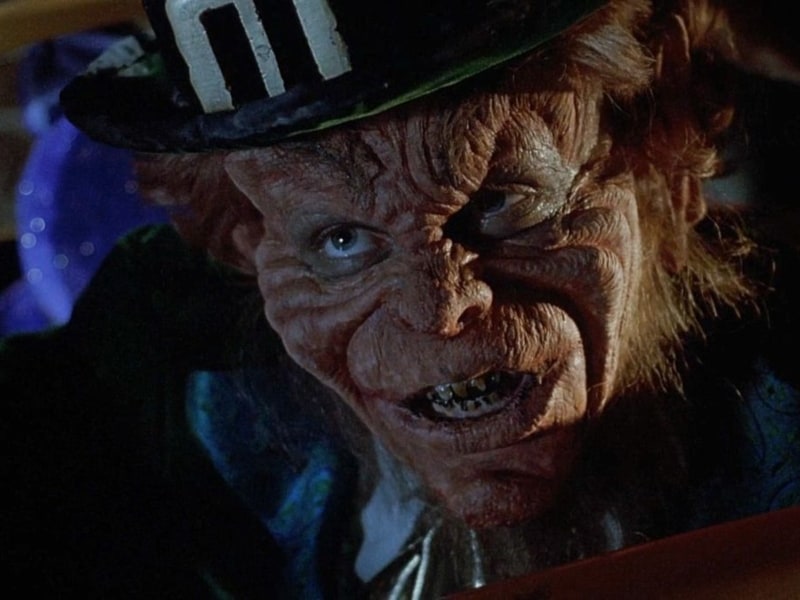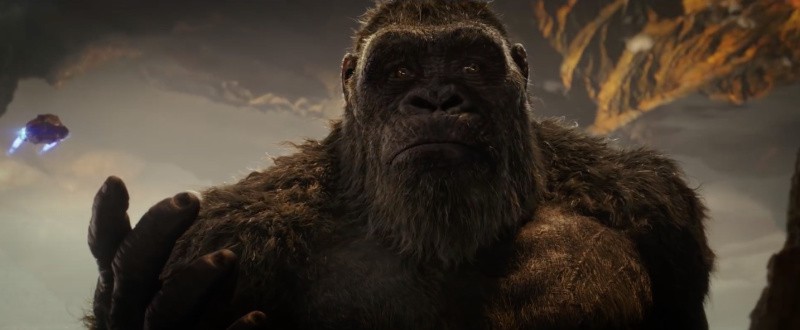Crossing the Streams is a series of columns spotlighting all the offerings hitting the big streaming services each month. This time we’re checking out the new Netflix arrivals for April 2021, including a new fantasy series, new movies with Idris Elba and Melissa McCarthy (not together), and more!
Keep reading to see what’s new on Netflix for April 2021!
Netflix Pick of the Month for April 2021

The quest for new fantasy series capable of taking hold in pop culture continues with the latest entry, Shadow and Bone, premiering April 23rd. The eight-episode series is adapted from Leigh Bardugo’s best-selling debut novel and explores a world divided by an epic “fold” that’s hazardous to pass through. Like an alternate East/West Berlin but infused with magic, war, and all manner of shady characters, the world is centered on a young mapmaker whose untapped powers pose an immense threat to everyone around her. I’m only a few episodes in so far, but it’s a thrilling, lavishly produced fantasy that promises an engaging watch.
Movies About Unemployed Wives, Apparently

The Time Traveler’s Wife (2009) stars Rachel McAdams, and honestly, that’s all the reason you really need to give it a watch if you’ve yet to see it. Hell, it’s a great reason to rewatch too. Happily, it’s also a pretty lovely romantic drama as McAdams plays a woman who falls in love with a man (Eric Bana) prone to a peculiar ailment — he’s become unstuck in time. The film manages drama, suspense, romance, fantasy, and more and is an affecting tale powered by two strong leads.
The Zookeeper’s Wife (2017) premieres on April 16th and is a bit rougher of a watch. That’s not a knock — it’s just a tough premise as Jessica Chastain stars as a woman tasked with rescuing animals during a Nazi invasion. The story is based in truth and finds courage and heart in the face of despair and carnage, but while inspirational it’s also an understandably sad and heartbreaking experience. It’s worth a watch, but you’ll want to chase it with something lighter.
New Netflix Films

Concrete Cowboy premieres on April 2nd and stars Idris Elba as a man whose estranged son comes to live with him in the city. The boy’s been having troubles, but he bonds and reconnects with his dad by way of the man’s unlikely persona — he’s an urban cowboy of the horse-riding kind. The community of Black cowboys is small but loyal, and as he’s welcomed into their fold he discovers life lessons and a purpose he never knew existed.
Thunder Force premieres on April 9th and is the fifth feature from Ben Falcone starring Melissa McCarthy. The couple hasn’t had the greatest track record together, and while I’d go to bat for Tammy (2014), I don’t have much in the way of kind words for the other three. That said, I do love that McCarthy continues to work with him because the dude genuinely cracks her up. Their latest collaboration sees McCarthy and Octavia Spencer star as unlikely superheroes hoping to stem the tide of supervillains in the city they call home.
The Soul, aka Ji hun, premieres on April 14th and is a new genre tale from Cheng Wei-hao. The filmmaker’s previous films include the terrific chiller, The Tag-Along (2015), as well as its sequel, and 2017’s engaging slow-burn of a mystery, Who Killed Cock Robin? His latest follows a couple investigating a man’s death, but the truth at the heart of it all threatens to pull them into a supernatural mystery. Cheng is three for three with his feature films so far, so The Soul is one of this month’s most anticipated for me.
Stowaway premieres on April 22nd and is a sci-fi adventure about a mission to Mars with a three-person crew, but trouble arises when mechanical issues and the discovery of a fourth person on board threaten to end the journey early. This is director/co-writer Joe Penna’s follow-up to the excellent Mads Mikkelsen-starring survival thriller, Arctic (2018), and it once again sees him delivering a life or death adventure. The cast includes Daniel Dae Kim, Toni Collette, and Anna Kendrick.
The Oldest New Arrival on Netflix

It’s an acknowledged truth that Netflix isn’t exactly keen on “older” films as they continue to build their own library instead. They still add feature films each month, but they’re typically from the past thirty years which is why we like to highlight the oldest new arrival as both a celebration and a knock. This month? Netflix reaches back twenty-eight years and finds… Leprechaun (1993). If you’re among the millions still upset that the service dropped Friends, then perhaps you can take solace knowing that Jennifer Aniston fights an evil little bastard from Ireland here and a good time is had by all.
The Complete Netflix List for March 2021
| Release Date | Title | Note |
|---|---|---|
| 4/1 | 2012 (2009) | |
| Cop Out (2010) | ||
| Friends with Benefits (2011) | ||
| Insidious (2010) | ||
| Legally Blonde (2001) | ||
| Leprechaun (1993) | ||
| The Pianist (2002) | ||
| The Possession (2012) | ||
| Prank Encounters: Season Two | Netflix Original | |
| Secrets of Great British Castles: Season One | ||
| Tersanjung: The Movie | Netflix Film | |
| The Time Traveler's Wife (2009) | ||
| Tyler Perry's Madea's Big Happy Family (2011) | ||
| White Boy (2017) | ||
| Worn Stories | Netflix Documentary | |
| Yes Man (2008) | ||
| 4/2 | Concrete Cowboy | Netflix Film |
| Just Say Yes | Netflix Film | |
| Madame Claude | Netflix Film | |
| The Serpent | Netflix Original | |
| Sky High | Netflix Film | |
| 4/3 | Escape from Planet Earth (2012) | |
| 4/4 | What Lies Below (2020) | |
| 4/5 | Coded Bias (2020) | |
| Family Reunions: Part Three | Netflix Family | |
| 4/6 | The Last Kids on Earth: Happy Apocalypse to You | Netflix Family |
| 4/7 | The Big Day: Collection Two | Netflix Original |
| Dolly Parton: A MusicCares Tribute | Netflix Documentary | |
| Snabba Cash | Netflix Original | |
| This is a Robbery: The World's Biggest Art Heist | Netflix Documentary | |
| The Wedding Coach | Netflix Original | |
| 4/8 | The Way of the Househusband | Netflix Anime |
| 4/9 | Have You Ever Seen Fireflies? | Netflix Film |
| Night in Paradise | Netflix Film | |
| Thunder Force | Netflix Film | |
| 4/10 | The Stand In (2020) | |
| 4/11 | Diana: The Interview that Shook the World | |
| 4/12 | New Gods: Nezha Reborn | Netflix Film |
| Nicky, Ricky, Dicky, and Dawn: Seasons One thru Four | ||
| 4/13 | The Baker and the Beauty: Season One | |
| Mighty Express: Season Three | Netflix Family | |
| My Love: Six Stories of True Love | Netflix Documentary | |
| 4/14 | The Circle: Season Two | Netflix Original |
| Dad Stop Embarrassing Me | Netflix Original | |
| Law School | Netflix Original | |
| The Soul | Netflix Film | |
| Why Did You Kill Me? | Netflix Documentary | |
| 4/15 | Dark City Beneath the Beat (2020) | |
| The Master (2012) | ||
| Ride or Die | Netflix Film | |
| 4/16 | Arlo the Alligator Boy | Netflix Family |
| Ajeeb Daastaans | Netflix Film | |
| Barbie & Chelsea: The Lost Birthday | ||
| Crimson Peak (2015) | ||
| Fast & Furious Spy Racers: Season Four - Mexico | Netflix Family | |
| Into the Beat | Netflix Film | |
| Rush (2013) | ||
| Synchronic (2019) | ||
| Why Are You Like This? | Netflix Original | |
| The Zookeeper's Wife (2017) | ||
| 4/18 | Luis Miguel - The Series: Season Two | Netflix Original |
| 4/19 | Miss Sloane (2016) | |
| PJ Masks: Season Three | ||
| 4/20 | Izzy's Koala World: Season Two | Netflix Family |
| 4/21 | Zero | Netflix Original |
| 4/22 | Life in Color with David Attenborough | Netflix Documentary |
| Stowaway | Netflix Film | |
| 4/23 | Heroes: Silence and Rock & Roll | |
| Shadow and Bone | Netflix Original | |
| Tell Me When | Netflix Film | |
| 4/27 | August: Osage County (2013) | |
| Battle of Los Angeles (2011) | ||
| Fatma | Netflix Original | |
| Go! Go! Cory Carson: Season Four | Netflix Family | |
| 4/28 | Headspace Guide to Sleep | Netflix Documentary |
| Sexify | Netflix Original | |
| 4/29 | Things Heard and Seen | Netflix Film |
| Yasuke | Netflix Anime | |
| 4/30 | The Innocent | Netflix Original |
| The Mitchells vs the Machines | Netflix Family | |
| Pet Stars | Netflix Original | |
| The Unremarkable Juanquini: Season Two | Netflix Original |


